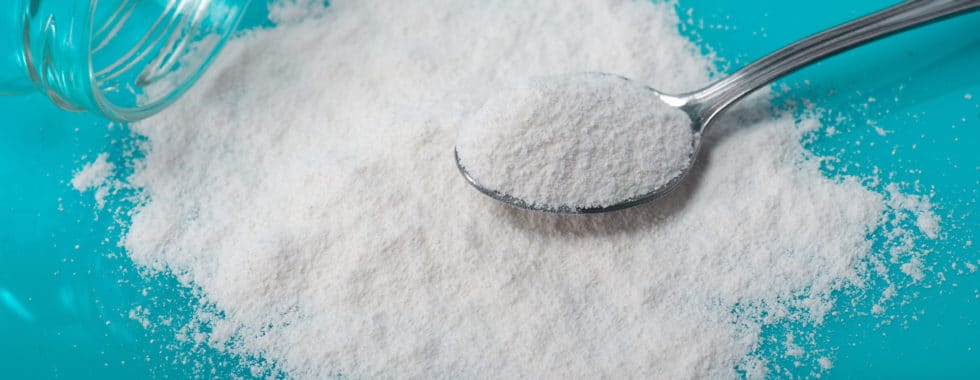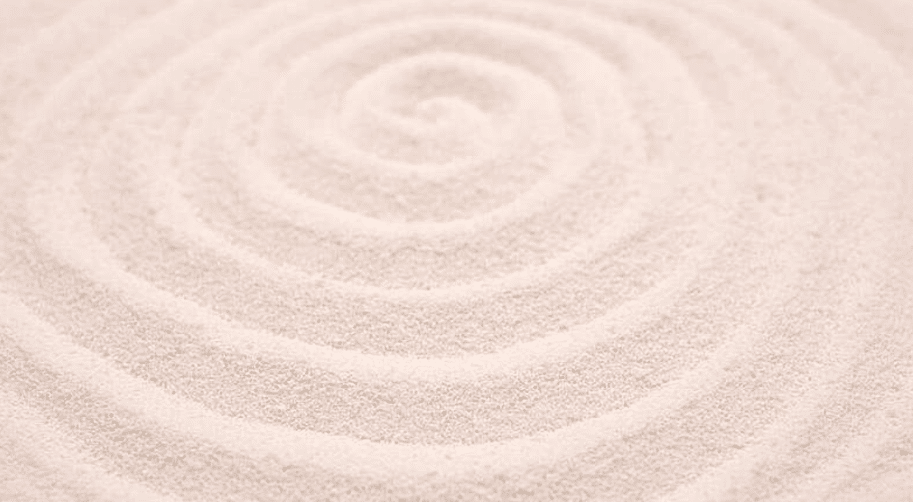Exploring the Benefits of Niacinamide vs Hyaluronic Acid: A Comprehensive Comparison for B2B Markets
In the realm of cosmetic and nutritional supplements, two powerhouse ingredients have taken center stage: niacinamide and hyaluronic acid. While both are celebrated for their skin-enhancing properties, a deeper dive reveals a complex landscape, especially pertinent for B2B companies looking to make informed decisions for product development and procurement. This article compares the efficacy, safety, production processes, and market applications of the two ingredients, equipping businesses with the insights needed to navigate the industry.
Basic Information: Niacinamide vs Hyaluronic Acid
Before delving into the heart of the comparison, let’s outline some fundamental details about these ingredients.
- Niacinamide (also known as nicotinamide) is a form of vitamin B3. Its CAS number is 98-92-0. Niacinamide is generally encountered in a white crystalline powder form, and it is usually odorless. It is soluble in water and has a standard purity of 99%. The recommended storage conditions are cool, dry places, typically in airtight packaging to maintain potency.
- Hyaluronic Acid (HA), scientifically denoted as sodium hyaluronate in its salt form, has a CAS number of 9067-38-7. Hyaluronic acid exists as a viscous gel-like substance and is known for its ability to hold up to 1000 times its weight in water. It’s also water-soluble, making it ideal for hydrating products. Common specifications range in molecular weights, influencing its performance and application.
Historical Background
Niacinamide was first discovered in the early 20th century, primarily for its role in preventing pellagra, a disease caused by vitamin B3 deficiency. It has since garnered attention for its broader benefits in skincare, such as reducing inflammation and improving skin barrier function.
Hyaluronic acid, on the other hand, has a more storied history, originating in the 1930s when it was extracted from rooster combs. Today, its commercial form is primarily bio-sourced or derived through bacterial fermentation, making it more sustainable and versatile for medical and cosmetic applications.
Efficacy: Key Benefits and Functionality
When setting out to compare niacinamide and hyaluronic acid, the focus often shifts to their unique benefits:
- Niacinamide:
- Reduces the appearance of enlarged pores, uneven skin tone, and fine lines.
- Boosts skin elasticity and enhances the skin barrier, which is crucial for protecting against external irritants.
- Exhibits anti-inflammatory properties, making it beneficial for acne and sensitive skin types.
- Hyaluronic Acid:
- Acts as a powerful humectant, attracting and retaining moisture, thereby plumping the skin.
- Creates a cushioning effect in the skin and joints, alleviating dryness and promoting overall hydration.
- Supports wound healing and reduces inflammation, making it suitable for post-procedure care.
Safety Considerations
Both niacinamide and hyaluronic acid are generally recognized as safe when used appropriately. However, some points merit attention:
- Niacinamide can occasionally cause mild irritation, particularly in sensitive individuals or at high concentrations. However, formulations typically aim to balance efficacy with tolerability.
- Hyaluronic acid is non-toxic and rarely causes adverse reactions, but the specific formulation (e.g., low/high molecular weight HA) can affect its performance and user perception.
In terms of regulatory perspectives, both ingredients are widely accepted in markets across the globe, including the US and Europe. They are usually included in cosmetic applications without stringent limitations.
Production Processes: Striking Differences
Niacinamide production generally involves the oxidation of nicotinic acid or the reductive amination of 3-pyridinecarboxylic acid. This process is fairly straightforward and cost-effective, translating into a generally lower price point that is appealing in B2B dealings.
Hyaluronic acid’s production is more complex. Traditionally sourced from animal tissues, most commercial formulations today utilize microbial fermentation or enzymatic synthesis to ensure purity and consistency. This method can involve significant investment in fermentation technology and quality control measures, impacting overall production costs.
Market Applications and Trends
When examining the market dynamics, niacinamide and hyaluronic acid serve a diverse range of applications:
- Niacinamide shines in facial care, serums, and treatments aimed at anti-aging and revitalization, appealing to brands targeting diverse demographics seeking effective skincare solutions.
- Hyaluronic acid’s versatility allows it to be included in a wider array of products, from moisturizers to injectable treatments for joint pain and cosmetic fillers. Its demand is driven by the growing interest in hydration-focused skincare and wellness strategies.
Recent market research indicates that the global hyaluronic acid market was valued at approximately USD 6.3 billion in 2020 and is expected to witness significant growth. In contrast, niacinamide maintains a steady market presence, particularly within formulations for those concerned about aging and skin health.
Frequently Asked Questions (FAQ) on Niacinamide and Hyaluronic Acid
- What forms do niacinamide and hyaluronic acid come in?
- Both ingredients are typically available as powders or serums, with niacinamide being more common in powdered form for formulations, while HA often appears in gel textures.
- Are there any side effects associated with these ingredients?
- While both are generally safe, niacinamide can cause minor irritation in sensitive skin; hyaluronic acid is less likely to cause adverse effects.
- What are the common usage levels for these ingredients in formulations?
- Niacinamide is effective in concentrations ranging from 2-10%; hyaluronic acid concentrations can vary widely, but 0.5-2% is standard for hydration.
- How quickly can users see results from niacinamide and hyaluronic acid?
- Users typically report improvements in skin texture and hydration within a few weeks of consistent use.
- What strategies should brands consider when sourcing these ingredients?
- It’s critical to ensure suppliers provide transparency regarding sourcing, manufacturing processes, and quality control certifications.
- How do these ingredients fit into the clean beauty movement?
- Both ingredients are considered clean and effective, aligning well with consumer demand for transparent and sustainable formulations.
Conclusion
Niacinamide and hyaluronic acid each bring distinct advantages to the table, influencing their efficacy, safety, and market applications. Choosing between them—or, more ideally, utilizing both—depends on the target market’s needs and the desired product outcome. As companies navigate the evolving landscape of cosmetic ingredients, a well-informed approach to sourcing these materials will undoubtedly translate into greater product success.
Niacinamide VS HA
Niacinamide vs Hyaluronic Acid: The Ultimate B2B Showdown
Hey there, skincare enthusiasts and beauty brand moguls! 👋 Ready to dive into the world of niacinamide vs hyaluronic acid? Buckle up, because we’re about to embark on a journey that’ll make your products shine brighter than a diamond in the rough. Whether you’re a formulation wizard, a brand owner, or just someone curious about the latest in skincare science, this guide is your golden ticket to understanding these two powerhouse ingredients. So, let’s get this skincare party started!
The Basics: Meet Our Contenders
Before we dive into the nitty-gritty, let’s introduce our star players:
Niacinamide (aka Vitamin B3 or Niacin):
– Latin name: Nicotinamide
– CAS number: 98-92-0
– Appearance: White, crystalline powder
– Solubility: Water-soluble
Hyaluronic Acid (HA):
– Latin name: Acidum hyaluronicum
– CAS number: 9004-61-9
– Appearance: White to off-white powder
– Solubility: Water-soluble (often used as sodium hyaluronate for better stability)
Now that we’ve made the introductions, let’s get down to business!
Functionality Face-Off: What Can These Ingredients Do?
Niacinamide: The Multitasking Marvel
Niacinamide is like the Swiss Army knife of skincare. It’s got more tricks up its sleeve than a magician at a birthday party. Here’s what it can do:
1. Oil control: It’s like a bouncer for your pores, keeping excess sebum in check.
2. Brightening: It can fade dark spots faster than you can say “hyperpigmentation.”
3. Anti-aging: It boosts collagen production, giving fine lines the boot.
4. Barrier function: It strengthens the skin’s protective barrier, like a force field for your face.
Hyaluronic Acid: The Hydration Hero
If niacinamide is the Swiss Army knife, hyaluronic acid is the fire hose of hydration. Here’s its claim to fame:
1. Hydration (duh!): It can hold up to 1000 times its weight in water. Talk about overachieving!
2. Plumping: It fills out fine lines and wrinkles, like a natural filler.
3. Soothing: It calms irritated skin, like a lullaby for angry complexions.
4. Enhances penetration: It can help other ingredients penetrate deeper into the skin.
But how do they stack up in terms of effectiveness? Let’s break it down:
Niacinamide:
– Concentration sweet spot: 2-5%
– Time to see results: 4-8 weeks
Hyaluronic Acid:
– Concentration sweet spot: 1-2%
– Time to see results: Almost immediate for hydration, 2-4 weeks for other benefits
Safety First: Are These Ingredients Playing Nice?
When it comes to safety, both niacinamide and hyaluronic acid are like the goody-two-shoes of the skincare world. They’re generally well-tolerated by most skin types and have low risk of irritation. But let’s dive a bit deeper:
Niacinamide:
– Potential side effects: Mild redness or itching in some people (rare)
– Interactions: Plays well with most other ingredients, but might cause flushing if used with pure vitamin C (L-ascorbic acid)
Hyaluronic Acid:
– Potential side effects: Can actually dry out skin if used incorrectly (more on that later!)
– Interactions: Gets along with pretty much everyone in the skincare playground
Pro tip: Always patch test new products, no matter how gentle the ingredients seem!
The Production Puzzle: How Are These Ingredients Made?
Niacinamide:
– Main production method: Chemical synthesis
– Key steps: Involves the oxidation of nicotine or 3-cyanopyridine
– Production challenges: Ensuring purity and consistent quality
Hyaluronic Acid:
– Main production methods:
1. Extraction from animal sources (less common now)
2. Bacterial fermentation (more sustainable and popular)
– Production challenges: Controlling molecular weight for specific benefits
From a B2B perspective, here’s what you need to know:
– Niacinamide production is generally more straightforward and cost-effective.
– Hyaluronic acid production can be more complex, especially when aiming for specific molecular weights.
Market Matters: Where Are These Ingredients Shining?
Niacinamide:
– Global market size: Expected to reach $1.5 billion by 2027
– Growth rate: CAGR of 4.9% from 2020 to 2027
– Key markets: North America, Europe, Asia-Pacific
Hyaluronic Acid:
– Global market size: Projected to hit $15.4 billion by 2026
– Growth rate: CAGR of 7.8% from 2021 to 2026
– Key markets: Asia-Pacific (especially Japan and South Korea), North America, Europe
But what does this mean for you, dear B2B beauty brand? Well, both ingredients are hot commodities, but hyaluronic acid seems to be growing at a faster clip. However, niacinamide’s versatility makes it a valuable player in a wide range of products.
Regulatory Roundup: How Are These Ingredients Viewed Around the World?
Niacinamide:
– USA: Generally Recognized as Safe (GRAS) by the FDA
– EU: Approved for use in cosmetics
– Japan: Approved as a quasi-drug ingredient
– Australia: Listed on the Australian Inventory of Chemical Substances (AICS)
Hyaluronic Acid:
– USA: Generally Recognized as Safe (GRAS) by the FDA
– EU: Approved for use in cosmetics
– Japan: Approved as a quasi-drug ingredient
– Australia: Listed on the Australian Inventory of Chemical Substances (AICS)
Both ingredients are widely accepted globally, but always check local regulations when formulating for specific markets!
The B2B Bottom Line: Which Ingredient Reigns Supreme?
Alright, it’s decision time. Which ingredient should you choose for your next groundbreaking product? Well, like most things in life, it depends. Here’s a quick rundown:
Choose Niacinamide if:
– You want a multitasking ingredient that addresses multiple skin concerns
– Your target market is concerned about oily skin, acne, or hyperpigmentation
– You’re looking for a cost-effective ingredient with a wide range of benefits
Go for Hyaluronic Acid if:
– Hydration is your primary concern
– You’re targeting the anti-aging market
– You want an ingredient with immediate, visible results
Or, here’s a wild idea: why not use both? These two ingredients play well together and can create a powerhouse product that addresses multiple skin concerns.
FAQs: Your Burning Questions Answered
1. Can I use niacinamide and hyaluronic acid together?
Absolutely! They’re like the dynamic duo of skincare.
2. Which is better for acne-prone skin?
Niacinamide takes the cake here, thanks to its oil-controlling properties.
3. How stable are these ingredients?
Both are relatively stable, but niacinamide is a bit more robust in formulations.
4. Are there vegan sources of hyaluronic acid?
Yes! Most HA these days is produced through bacterial fermentation.
5. Can these ingredients be used in all skin types?
Generally yes, but as always, individual reactions may vary.
The Final Verdict: It’s Not a Competition, It’s a Collaboration
In the great niacinamide vs hyaluronic acid debate, the real winner is… your skin! Both ingredients bring unique benefits to the table, and choosing between them (or using them together) depends on your specific product goals and target market.
Remember, in the world of skincare, it’s not about finding a single miracle ingredient. It’s about creating effective, well-rounded formulations that address multiple skin concerns. So, whether you choose niacinamide, hyaluronic acid, or both, you’re on the right track to creating products that will make your customers’ skin sing with joy.
Ready to take your skincare line to the next level with these powerhouse ingredients? Look no further than Gensei Global Industries. As an FDA-certified manufacturer with ISO, HALAL, KOSHER, and MSC certifications, they offer a wide range of high-quality ingredients, including niacinamide and hyaluronic acid. With warehouses in California and New York, they’re ready to fulfill your orders with stable and ample supply. Plus, they offer OEM and ODM services for those looking for customized solutions.
To explore their range of skincare ingredients and discuss your specific needs, drop them a line at sales@collagensei.com. Your customers (and their glowing skin) will thank you!
Remember, investing in quality ingredients is investing in your products’ success and your customers’ satisfaction. So go ahead, give niacinamide and hyaluronic acid a shot, and get ready to revolutionize your skincare line! ✨💖🌟



